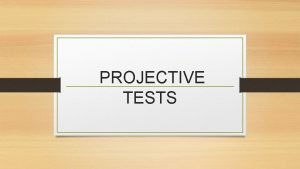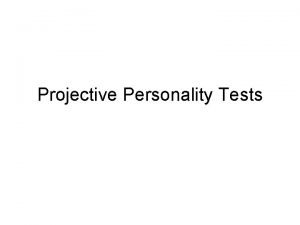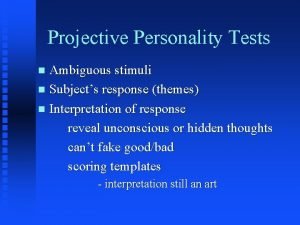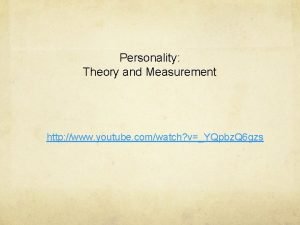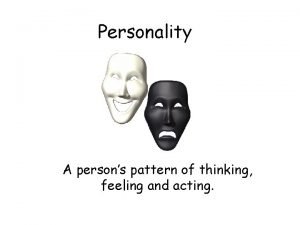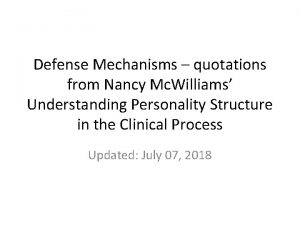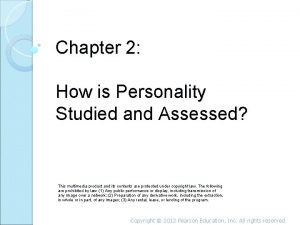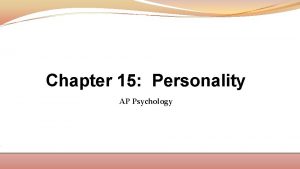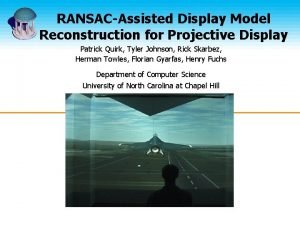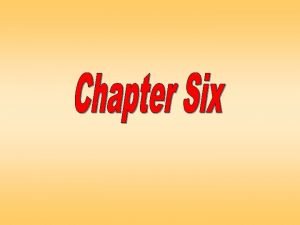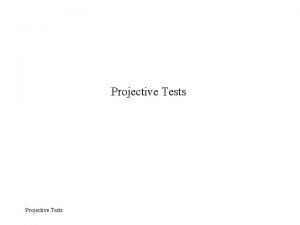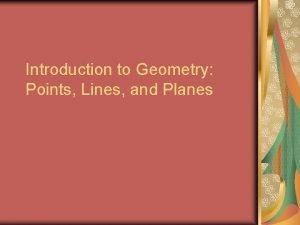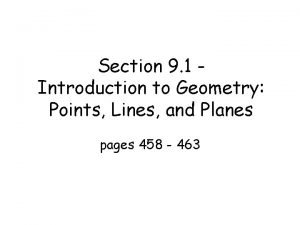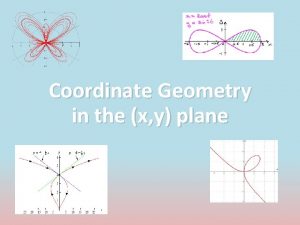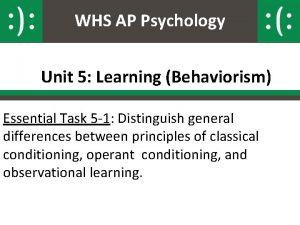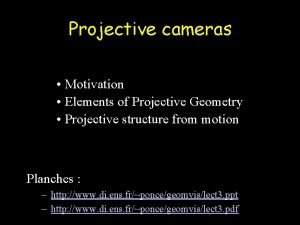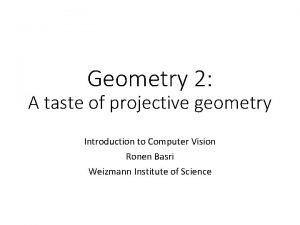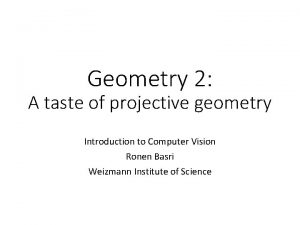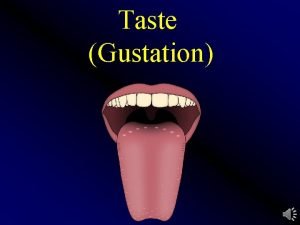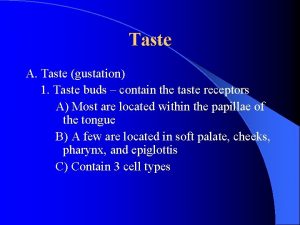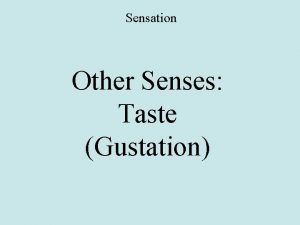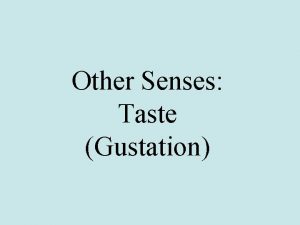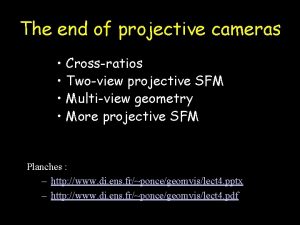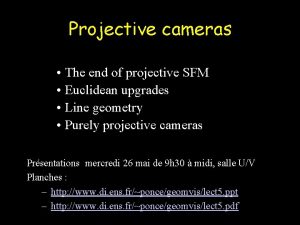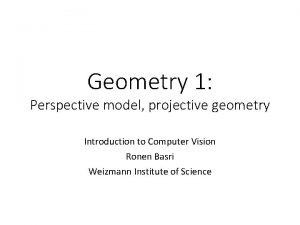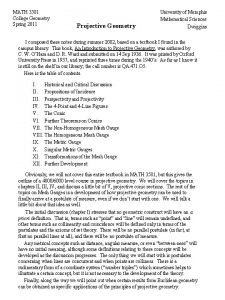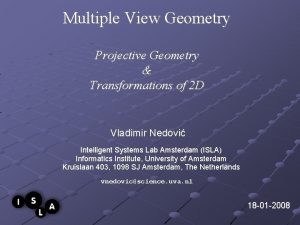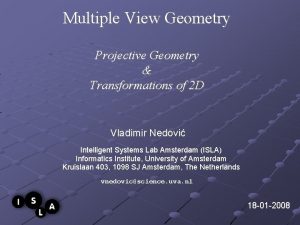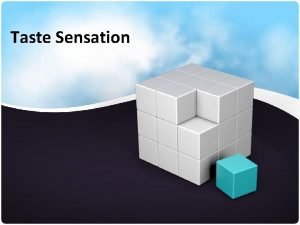Geometry 2 A taste of projective geometry Introduction
































- Slides: 32

Geometry 2: A taste of projective geometry Introduction to Computer Vision Ronen Basri Weizmann Institute of Science

Material covered • Pinhole camera model, perspective projection • Two view geometry, general case: • Epipolar geometry, the essential matrix • Camera calibration, the fundamental matrix • Two view geometry, degenerate cases • Homography (planes, camera rotation) • A taste of projective geometry • Stereo vision: 3 D reconstruction from two views • Multi-view geometry, reconstruction through factorization

Summary of last lecture •

Epipolar constraints, the Essential matrix • epipolar plane Baseline

Camera matrix •

The uncalibrated case: the Fundamental matrix •

The Fundamental matrix •

Geometry • Geometry – Greek: earth measurement • Geometry concerns with shape, size, relative positions, and properties of spaces • Euclidean geometry: • • • Point, line, plane Incidence Continuity Order, “between” Parallelism Congruence = invariance: angles, lengths, areas are preserved under rigid transformations

Projective geometry • How does a plane looks after projection? How does perspective distorts geometry?

Plane perspective Pencil of rays

Plane perspective Pencil of rays

Projective transformation

Projective transformation • How these change from Eucleadian geometry? • • • Point, line, plane Incidence Continuity Order, “between” Parallelism Congruence • Under projective transformation • A (straight) line transforms to a line and a conic to a conic • But order and parallelism are not preserved • Likewise, angles, lengths and areas are not preserved

Projective coordinates •

Projective line •

Intersection and incidence •

Ideal points •

Line at infinity

Line at infinity •

Homography •

Homography •

Hierarchy of transformations Rigid Preserves angles, lengths, area, parallelism Similarity Preserves angles, parallelism Affine Preserves parallelism Homography Preserves cross ratio

Camera rotation •

Planar scene •

Summary Homography Perspective (calibrated) Perspective (uncalibrated) Orthographic One-to-one (group) Concentric epipolar lines Parallel epipolar lines Form Properties DOFs 8(5) 8(7) 4 Eqs/pnt 2 1 1 1 Minimal configuration 4 5+ (8, linear) 7+ (8, linear) 4 Depth No Yes, up to scale Yes, projective Affine structure (third view required for Euclidean structure)

Recovering epipolar constraints

Recovering epipolar constraints •

Interest points (Harris) •

Descriptor: SIFT (Scale invariant feature transform) •

SIFT matches

RANSAC •

Epipolar lines
 Absolute conic
Absolute conic Projective test example
Projective test example Projective techniques are used to assess personality by:
Projective techniques are used to assess personality by: Projective open ended story test
Projective open ended story test Ambiguous stimuli test
Ambiguous stimuli test Projective hypothesis definition
Projective hypothesis definition Youtube
Youtube Barnum effect
Barnum effect Object relations
Object relations Retrospective labeling
Retrospective labeling Advantages of projective tests
Advantages of projective tests Identification defense mechanism
Identification defense mechanism Draw a person test
Draw a person test Raymond cattell ap psychology
Raymond cattell ap psychology Intuitive projective faith
Intuitive projective faith Qualitative research procedures
Qualitative research procedures Site:slidetodoc.com
Site:slidetodoc.com Projective monitor
Projective monitor Publicité mécaniste
Publicité mécaniste Projective listening
Projective listening Strengths of focus groups
Strengths of focus groups Conclusion of schizophrenia
Conclusion of schizophrenia Rorschach brad pitt
Rorschach brad pitt Projective techniques of data collection
Projective techniques of data collection Projective techniques in psychology
Projective techniques in psychology Vsepr model vs lewis structure
Vsepr model vs lewis structure 4 electron domains 2 lone pairs
4 electron domains 2 lone pairs The basis of the vsepr model of molecular bonding is _____.
The basis of the vsepr model of molecular bonding is _____. Points lines and planes geometry
Points lines and planes geometry Section 1 introduction to geometry answers
Section 1 introduction to geometry answers Xy coordinates
Xy coordinates Behaviorism ap psychology definition
Behaviorism ap psychology definition Ondansantron
Ondansantron


